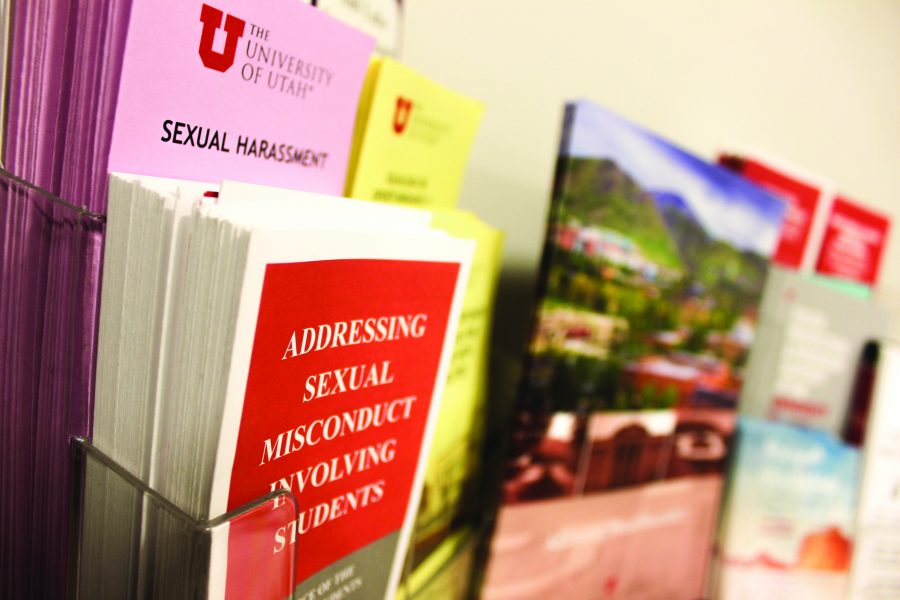Findings from the University of Utah’s second Campus Climate Survey confirmed that more students report experiencing sexual misconduct compared to the number of incidents that are officially reported. Results also indicated an increase in awareness of sexual violence and prevention methods compared to results from the 2016 Campus Climate Survey.
The campus-wide survey, sent out to U students in the spring of 2018 to complete between Jan. 30 and March 7, received a response rate of 12 percent (3,736 students). The first Campus Climate Survey in 2016 had an approximate 14 percent (4,104 students) response rate. Annalisa Purser, associate director of U communications, said the 2018 survey’s response rate was “well above what is necessary to trust the survey’s data and make useful inferences.”
The next Campus Climate Survey will be done in the spring of 2020.
In a statement released by the U, Sherrie Hayashi, director of the U’s Office for Equal Opportunity and Affirmative Action and Title IX (OEO/AA/Title IX) coordinator, said, “We have an ethical and legal responsibility to ensure students have equal opportunities and access to education.” Purser added that the information from the Campus Climate Surveys is “incredibly useful in helping the university inform its communication efforts, training, education and programming.”
“We know this is an underreported issue on campuses across the nation,” Purser said. “Having a better understanding of the reality of our campus helps us work toward improvements.”
Key Findings
A statement released by the University of Utah summarized several key findings of the survey.
- “Very few report incidents of sexual assault to university officials, stating the most common reason for not doing so is a consideration that it was not serious enough to report. When respondents report telling someone, it is most frequently a close friend or roommate.”
- “Most issues of sexual assault are reported to have occurred off campus, in private residences.”
- In the survey’s breakdown of how victims of sexual assault describe their perpetrator’s affiliation to the U, “harm is mostly perpetrated by other students, especially friends or acquaintances.” Additionally, about 45 percent of the cases described as “sexual touching when coerced” were reportedly done by a teacher or instructor.
- About 35 percent of respondents who said they were assaulted also said that they were unconscious at the time. About 20 percent of students who said they were assaulted either suspected or knew for certain that they were given alcohol or drugs without their consent. More than half of all nonconsensual sexual contact described by respondents involved alcohol.
- “Undergraduates experience more harm overall than graduate students, with rates highest for females.”
- “Harassment was reported most frequently, followed by sexual assault and sexual misconduct.”
- “Mental and emotional impacts of sexual assault are reported more frequently than physical impacts.”
Responses
While sexual misconduct remains a problem at the U, the second Campus Climate Survey responses also indicated that more students reported seeing increased efforts around campus to address sexual misconduct. This includes attending events or programs about bystander intervention, seeing posters about sexual assault and reading a report about sexual violence rates at the U.
More than half of survey respondents, however, were not aware of support resources at the U related to sexual assault response. “One relatively new resource is the safeu.utah.edu website, which compiles a variety of campus safety information into one location, making it easier to learn about reporting and support,” said Purser. “I would encourage all members of our community to visit that website and become familiar with it.”
In addition to the safeu.utah.edu website launch in the fall of 2017, the statement released by the U lists several efforts made by offices and groups at the U to increase the availability and breadth of resources for students and staff.
This includes the development of “a new case management system for OEO/AA/Title IX in 2018 to improve its ability to track and respond to claims in a timely manner.” Plus, three new positions for OEO/AA/Title IX were created and an additional victim-survivor advocate in the Center for Student Wellness was hired.
A training of discrimination, harassment and sexual misconduct prevention is offered to all new employees at the U, and an online course on sexual assault prevention is distributed to all incoming undergraduate and graduate students.
Last but not least, the U added April Sexual Assault Awareness Month in 2016 and October Domestic Violence Awareness Month in 2018 to regular campus programming in order to “increase outreach education to students on healthy relationships, communication skills and bystander intervention training.”
How and where to report
Based on data from both surveys, it is clear the majority of students remain unsure about where to report a claim of sexual misconduct. The safeu.utah.edu website is a good place to start and outlines various reporting options and support services.
Any U employee who is aware of a claim of sexual misconduct is required by university policy to report it to the U’s Title IX coordinator. This office will determine whether the incident violates federal laws or university policies before conducting a neutral investigation. Meanwhile, it works to provide individuals with support and resources regardless of the investigation outcome.
Individuals may also choose to report to law enforcement if they are interested in pursuing criminal charges.
There are also a variety of resources on campus where individuals may report confidentially. These include the Counseling Center, the Victim-Survivor Advocates, counselors in the Women’s Resource Center and the hospital chaplain.


